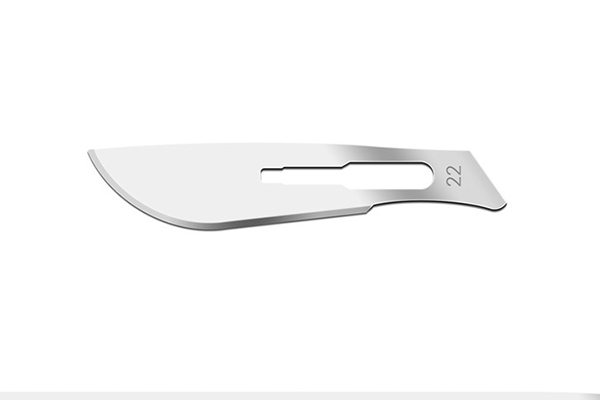Surgical blades, also known as scalpels, are one of the most essential tools in medical procedures. Renowned for their precision and effectiveness, these blades are engineered to perform delicate tasks with minimal damage to surrounding tissues. Their sharpness is a defining characteristic, but just how sharp is a surgical blade, and what makes it so effective?
Understanding Surgical Blade Sharpness
A surgical blade’s sharpness is determined by its fine edge, allowing it to cut through tissues with precision. Typically, the sharpness of a surgical blade is far superior to that of most common knives or cutting tools. Here’s how it compares:
- Microscopic Precision: The edge of a surgical blade is honed to microscopic thinness, sometimes just a few microns wide. This level of refinement ensures that the blade can make incisions with minimal pressure.
- Razor-Sharp Edges: A surgical blade is often sharper than a household razor blade, capable of cutting through soft tissue, cartilage, and even some tougher materials with ease.
- Consistent Quality: The manufacturing process of surgical blades involves rigorous quality control to ensure uniform sharpness across every blade produced.
Materials Used in Surgical Blades
The sharpness of a surgical blade also depends on the materials used in its construction. Most surgical blades are made from:
- Stainless Steel: Known for its durability, corrosion resistance, and ability to hold an edge, stainless steel is the most common material used.
- Carbon Steel: Offers superior sharpness to stainless steel but may be more prone to corrosion.
- Ceramic Blades: Less common but incredibly sharp and resistant to wear, these blades are used in specialized procedures.
- Diamond-Coated Blades: Used for excellent procedures, these blades are at the pinnacle of sharpness and precision.

How Sharpness Enhances Surgical Precision
The sharpness of a surgical blade is critical for its function in medical procedures. Here’s why:
- Minimized Tissue Damage: A sharp blade makes a clean incision, reducing trauma to surrounding tissues. This results in faster healing and less scarring.
- Improved Control: Surgeons rely on the sharpness of the blade to make precise cuts, ensuring that only the intended area is affected.
- Reduced Force Requirement: A sharp blade requires less pressure, allowing for smoother, more controlled movements during surgery.
- Enhanced Safety: Paradoxically, a sharper blade is often safer to use because it cuts cleanly without tugging or tearing.
Comparing Surgical Blades to Other Cutting Tools
Surgical blades are sharper than most other tools, including:
- Kitchen Knives: While sharp for culinary purposes, kitchen knives cannot achieve the same level of refinement as surgical blades.
- Utility Knives: Designed for toughness rather than precision, utility knives are not nearly as sharp.
- Industrial Blades: Although some industrial blades are incredibly sharp, they are typically used for cutting hard materials and are not as fine-edged as surgical tools.
In some cases, surgical blades are even compared to high-performance razors, but they surpass razors in their ability to retain sharpness and precision under demanding conditions.
Blade Shapes and Sizes
Surgical blades come in various shapes and sizes, each designed for specific types of procedures. Common examples include:
- #10 Blade: A general-purpose blade used for making larger incisions.
- #11 Blade: Has a pointed tip, ideal for precision cuts and stab incisions.
- #15 Blade: Smaller and curved, perfect for delicate surgeries requiring intricate work.
The shape and size of the blade determine how sharp its edge feels and how it interacts with the tissue being cut.
Maintaining Sharpness During Use
While surgical blades are incredibly sharp, they do not maintain their edge indefinitely during a procedure. The following factors can dull the blade:
- Contact with Tough Tissues: Cutting through bone or cartilage can wear down the edge.
- Repeated Use: Surgical blades are often designed for single use to ensure maximum sharpness for each procedure.
- Sterilization Processes: Although rare, improper sterilization methods can affect the blade’s integrity.
For this reason, most surgical blades are disposable, ensuring that each procedure is performed with a blade at peak sharpness.
Why Sharpness Matters Beyond Surgery
The precision of surgical blades has applications beyond the operating room. Industries such as art restoration, laboratory research, and electronics manufacturing utilize surgical blades for tasks requiring extreme accuracy. Their unmatched sharpness and reliability make them indispensable in these fields.
Conclusion
The sharpness of a surgical blade is a result of meticulous engineering, high-quality materials, and precise manufacturing processes. Designed to create clean, accurate incisions, these blades are sharper than most tools found outside the medical field. Their sharpness not only enhances surgical precision but also reduces trauma, promotes faster healing, and improves patient outcomes. Whether in the operating room or another high-precision setting, the surgical blade remains a symbol of cutting-edge innovation—both literally and figuratively.
Post time: 12月-24-2024





